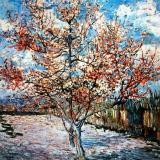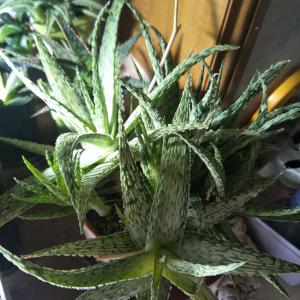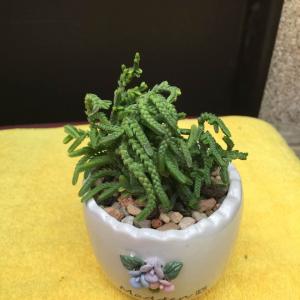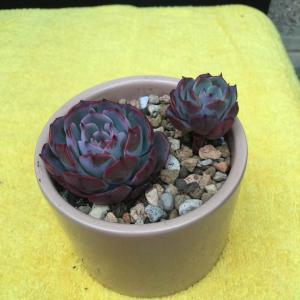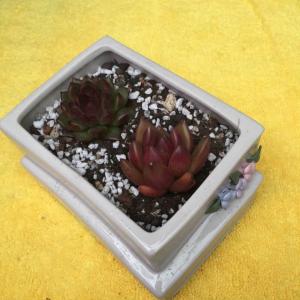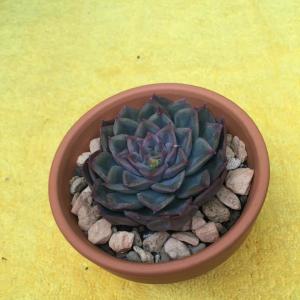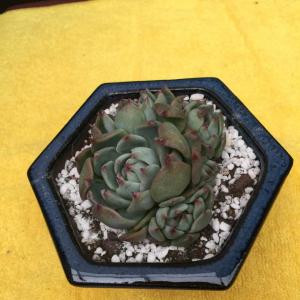文章
Miss Chen
2018年02月28日

Description: This herbaceous perennial plant is 1-2½' tall, branching sparingly in the upper half of the plant. The stems are hairless and round, with light green lines that run vertically. The basal leaves are undivided, up to 4" long and 3" across, and have petioles about 2-3" long. They are usually cordate or broadly ovate in overall shape, but with blunt or rounded tips. Otherwise, the leaves alternate up the stem, having progressively shorter petioles and a smaller size. The upper leaves are often ternately compound, and sometimes each leaflet is divided into three lobes. The surface of these leaves are often shiny, while their margins are serrate or crenate. There may be a purplish spot where the petiole meets the base of a leaf.
Compound Umbels of Flowers
The upper stems produce compound umbels of tiny yellow flowers. A typical umbel spans about 2-3" across, and consists of about 7-15 umbellets, which in turn have about 10-20 flowers. These flowers have short pedicels, except the central flower of each umbellet, which is sessile. Each flower has 5 yellow petals that barely open, and is less than 1/8" across. The blooming period occurs during late spring and lasts about a month. There is no noticeable floral scent. Each flower is replaced by a small fruit with 5 angular ribs – however, this fruit is not winged. The root system consists of a central taproot.
Cultivation: This plant prefers light shade to full sun, and mesic to dry conditions. The soil can contain loam, clay-loam, or some rocky material. This plant is easy to grow, and not much troubled by foliar disease.

Range & Habitat: The native Heartleaf Golden Alexanders is restricted to NE Illinois, where it is an uncommon plant (see Distribution Map). It also occurs in Hardin county of SE Illinois. Habitats include moist to dry black soil prairies, hill prairies, rocky upland woodlands, limestone glades, bluffs, abandoned fields, and roadsides. Usually, this species occurs in drier locations than Zizia aurea (Golden Alexanders).
Faunal Associations: Various kinds of insects visit the flowers primarily for nectar, especially small bees (Halictid, Andrenid, Nomadine) and flies (Chloropid, Tachinid, Muscid, Syrphid, etc.), as well as occasional beetles and plant bugs. The bees collect pollen as well, while some flies and beetles may feed on pollen. The caterpillars of Papilio polyxenes asterias (Black Swallowtail butterfly) feed on the foliage of this and other members of the Carrot family.

Photographic Location: The photographs were taken at the wildflower garden of the webmaster in Urbana, Illinois.
Comments: Heartleaf Golden Alexanders differs from its close relative, Zizia aurea (Golden Alexanders), by its simple basal leaves, while the latter species has lower leaves that are compound. It also closely resembles Thaspium trifoliatum var. aureum (Meadow Parsnip), but differs from this species in two ways: 1) The central flower of each umbellet is sessile, and 2) the angular fruits enclosing the seeds lack wings. The central flower of each umbellet for the Meadow Parsnip, on the other hand, has a short pedicel like the other flowers, and its angular fruits are strongly winged and somewhat flattened. These latter characteristics provide the Meadow Parsnip with a slight advantage in the distribution of its seeds by wind.
Compound Umbels of Flowers
The upper stems produce compound umbels of tiny yellow flowers. A typical umbel spans about 2-3" across, and consists of about 7-15 umbellets, which in turn have about 10-20 flowers. These flowers have short pedicels, except the central flower of each umbellet, which is sessile. Each flower has 5 yellow petals that barely open, and is less than 1/8" across. The blooming period occurs during late spring and lasts about a month. There is no noticeable floral scent. Each flower is replaced by a small fruit with 5 angular ribs – however, this fruit is not winged. The root system consists of a central taproot.
Cultivation: This plant prefers light shade to full sun, and mesic to dry conditions. The soil can contain loam, clay-loam, or some rocky material. This plant is easy to grow, and not much troubled by foliar disease.

Range & Habitat: The native Heartleaf Golden Alexanders is restricted to NE Illinois, where it is an uncommon plant (see Distribution Map). It also occurs in Hardin county of SE Illinois. Habitats include moist to dry black soil prairies, hill prairies, rocky upland woodlands, limestone glades, bluffs, abandoned fields, and roadsides. Usually, this species occurs in drier locations than Zizia aurea (Golden Alexanders).
Faunal Associations: Various kinds of insects visit the flowers primarily for nectar, especially small bees (Halictid, Andrenid, Nomadine) and flies (Chloropid, Tachinid, Muscid, Syrphid, etc.), as well as occasional beetles and plant bugs. The bees collect pollen as well, while some flies and beetles may feed on pollen. The caterpillars of Papilio polyxenes asterias (Black Swallowtail butterfly) feed on the foliage of this and other members of the Carrot family.

Photographic Location: The photographs were taken at the wildflower garden of the webmaster in Urbana, Illinois.
Comments: Heartleaf Golden Alexanders differs from its close relative, Zizia aurea (Golden Alexanders), by its simple basal leaves, while the latter species has lower leaves that are compound. It also closely resembles Thaspium trifoliatum var. aureum (Meadow Parsnip), but differs from this species in two ways: 1) The central flower of each umbellet is sessile, and 2) the angular fruits enclosing the seeds lack wings. The central flower of each umbellet for the Meadow Parsnip, on the other hand, has a short pedicel like the other flowers, and its angular fruits are strongly winged and somewhat flattened. These latter characteristics provide the Meadow Parsnip with a slight advantage in the distribution of its seeds by wind.
0
0
文章
Miss Chen
2018年02月27日

Description: This perennial plant is 3-6" tall. The individual leaves and flowering stems emerge directly from the rootstock. Each leaf is deeply divided into 3-5 palmate lobes, while a lobe may be further subdivided into 2-3 smaller lobes. The lobes are usually broader toward their tips than at the base of the leaf, and their tips may have 1 or 2 small teeth. A typical leaf is about 1" long and across (excluding the petiole). The petiole of each leaf is rather long and slender. The slender flowering stems are at least as long as the petioles; they are either green or purple. Each stem curves abruptly downward near the flower. The entire plant is hairless, or nearly so. The flowers have 5 petals and 5 sepals; they are ¾–1½" across. The sepals are green, while the petals are pale blue-violet to dark purple-violet. Usually the petals are the same color, although sometimes the upper two petals are dark purple-violet, while the lower three petals are pale blue-violet. Toward the throat of the flower, the lower petal is white with fine violet lines that function as nectar guides. There are no white hairs near the throat. The stamens are a conspicuous golden yellow.
The blooming period is mid- to late spring, and this plant may bloom during the fall. There may be a mild floral scent in some local ecotypes. Unlike other violets, Birdfoot Violet does not produce cleistogamous flowers. The coppery seeds can be ejected several inches from the mother plant. There is a sugary gel on the seeds that attracts ants; these ants often carry these seeds to their nests. The root system consists of a tuberous caudex with long coarse roots. Sometimes rhizomes are produced, forming vegetative offsets.
Cultivation: The preference is full sun and dry conditions. However, a little shade and more moisture is tolerated, if the site is well-drained. The soil should be sandy or rocky to reduce competition from other plants; a somewhat acid pH is preferred. The greatest danger is crown rot from poorly drained, heavy soil. This plant is more difficult to grow than most.

Range & Habitat: The native Birdfoot Violet occurs occasionally in northern Illinois and in counties along the Mississippi River, but it is uncommon or absent elsewhere (see Distribution Map). Habitats include upland areas of black soil prairies, sand prairies, hill prairies, sandstone glades, cherty slopes, thinly wooded bluffs, openings in rocky or sandy forests, sandy Black Oak savannas, and sand dunes near Lake Michigan. This plant is largely restricted to high quality habitats. Fire is a beneficial management tool in areas with trees and shrubs.
Faunal Associations: The flowers attract long-tongued bees, small butterflies, and skippers. Bee visitors during the spring include bumblebees and Anthophorine bees. Compared to other violets, the flowers of this species attracts more butterflies and skippers, which are often held horizontal to the ground (face up) and easier for such insects to land on. The caterpillars of various Fritillary butterflies feed on the foliage and flowers; the caterpillars of Speyeria idalia (Regal Fritillary) may prefer this violet species over others as a food source. As noted above, ants are attracted to the sugary gel on the seeds, and help to distribute them.

Photographic Location: The photograph of the plant with bicolored flowers was taken at a thinly wooded bluff near Kickapoo State Park in Vermilion County, Illinois. The photograph of the plant with pale blue-violet flowers was taken at a sandy savanna in Kankakee County, Illinois. The photograph of the plant with with violet flowers was taken on a sandy wooded hillside at the Indiana Dunes State Park in NW Indiana.
Comments: The photographs show three different color-forms of Birdfoot Violet and they are all beautiful. This violet can be distinguished from other Viola spp. (Violets) by its deeply lobed leaves, the large size of its flowers, and the absence of hairs near the throat of each flower. The common name refers to the appearance of the leaves.
The blooming period is mid- to late spring, and this plant may bloom during the fall. There may be a mild floral scent in some local ecotypes. Unlike other violets, Birdfoot Violet does not produce cleistogamous flowers. The coppery seeds can be ejected several inches from the mother plant. There is a sugary gel on the seeds that attracts ants; these ants often carry these seeds to their nests. The root system consists of a tuberous caudex with long coarse roots. Sometimes rhizomes are produced, forming vegetative offsets.
Cultivation: The preference is full sun and dry conditions. However, a little shade and more moisture is tolerated, if the site is well-drained. The soil should be sandy or rocky to reduce competition from other plants; a somewhat acid pH is preferred. The greatest danger is crown rot from poorly drained, heavy soil. This plant is more difficult to grow than most.

Range & Habitat: The native Birdfoot Violet occurs occasionally in northern Illinois and in counties along the Mississippi River, but it is uncommon or absent elsewhere (see Distribution Map). Habitats include upland areas of black soil prairies, sand prairies, hill prairies, sandstone glades, cherty slopes, thinly wooded bluffs, openings in rocky or sandy forests, sandy Black Oak savannas, and sand dunes near Lake Michigan. This plant is largely restricted to high quality habitats. Fire is a beneficial management tool in areas with trees and shrubs.
Faunal Associations: The flowers attract long-tongued bees, small butterflies, and skippers. Bee visitors during the spring include bumblebees and Anthophorine bees. Compared to other violets, the flowers of this species attracts more butterflies and skippers, which are often held horizontal to the ground (face up) and easier for such insects to land on. The caterpillars of various Fritillary butterflies feed on the foliage and flowers; the caterpillars of Speyeria idalia (Regal Fritillary) may prefer this violet species over others as a food source. As noted above, ants are attracted to the sugary gel on the seeds, and help to distribute them.

Photographic Location: The photograph of the plant with bicolored flowers was taken at a thinly wooded bluff near Kickapoo State Park in Vermilion County, Illinois. The photograph of the plant with pale blue-violet flowers was taken at a sandy savanna in Kankakee County, Illinois. The photograph of the plant with with violet flowers was taken on a sandy wooded hillside at the Indiana Dunes State Park in NW Indiana.
Comments: The photographs show three different color-forms of Birdfoot Violet and they are all beautiful. This violet can be distinguished from other Viola spp. (Violets) by its deeply lobed leaves, the large size of its flowers, and the absence of hairs near the throat of each flower. The common name refers to the appearance of the leaves.
0
0
文章
Miss Chen
2018年02月27日

Description: This perennial plant is 3-6' tall and unbranched, except for the flowering stalks of the inflorescence. The central stem is stout and covered with fine white hairs. The alternate dark green leaves are up to 7" long and 2" across. They are lanceolate to narrowly ovate, and slightly serrrated along the margins. The lower sides of the leaves are covered in dense white hairs, which are longer and more prominent than other Vernonia spp. At the apex of the plant, the inflorescence is a corymb of numerous rayless composite flowers. The hairy stems of the inflorescence are usually reddish brown. Each composite flower is about ½–¾" across, and contains from 30-60 disk florets (usually closer to the lower end of the range). These florets are bright magenta and quite showy. There is no floral scent. Numerous dull green or reddish brown bracts subtend the composite flowers, which are aligned together like fish scales. The blooming period occurs from late summer to early fall, and lasts about a month. The root system is densely fibrous and rhizomatous, and will form offsets to create a small colony of plants. The ribbed, slightly hairy achenes have a small tufts of light brown hair, and are dispersed by the wind.
Cultivation: This plant prefers full or partial sunlight and moist to average conditions. It is somewhat drought resistant. Under severe conditions, the plant will wilt and blooms abort. The soil texture can consist of fertile loam, clay-loam, or have a slightly gritty texture from exposed glacial till and gravel. Disease is not troublesome, except for occasional episodes of mildew during the fall. This species is easy to grow.
Range & Habitat: The native Missouri Ironweed occurs throughout Illinois, except in the NW corner of the state (see Distribution Map). It is a common plant. Typical habitats include moist to mesic black soil prairies, openings and edges of woodlands, swamps, seeps, limestone glades, edges of lakes, overgrazed pastures, vacant lots, and areas along railroads. It is common in disturbed areas, but also occurs in high quality habitats.

Faunal Associations: The flowers attract long-tongued bees, butterflies, and skippers primarily. Among the bees, are such visitors as bumblebees, Epeoline Cuckoo bees, and Miner bees. Butterfly visitors include Swallowtails, Whites, Sulfurs, Monarchs, Painted Ladies, and others. Bee flies and Halictid bees may also visit the flowers. The flowers are capable of self-pollination in the absence of these insects. The caterpillars of some moths feed on Ironweed species, including Grammia parthenice (Parthenice Tiger Moth), Perigea xanthioides (Red Groundling), and Papaipema cerussata (Ironweed Borer Moth). Mammalian herbivores avoid consumption of this plant because of the bitter taste of the leaves. In overgrazed pastures, Ironweed is an 'increaser' because it is one of the last plants to be eaten.

Photographic Location: Photographs were taken at the Red Bison Railroad Prairie in Savoy, Illinois.
Comments: This is an attractive plant when in bloom, and one of the best attractors of late summer butterflies. Missouri Ironweed can be distinguished from other Vernonia spp. primarily by the number of disk florets in the compound flowers, and the profuse hairiness of the stems and lower sides of the leaves. It is probably the most common species of ironweed in Illinois. Sometimes hybrids occur among different species of ironweeds, making identification difficult.
Cultivation: This plant prefers full or partial sunlight and moist to average conditions. It is somewhat drought resistant. Under severe conditions, the plant will wilt and blooms abort. The soil texture can consist of fertile loam, clay-loam, or have a slightly gritty texture from exposed glacial till and gravel. Disease is not troublesome, except for occasional episodes of mildew during the fall. This species is easy to grow.
Range & Habitat: The native Missouri Ironweed occurs throughout Illinois, except in the NW corner of the state (see Distribution Map). It is a common plant. Typical habitats include moist to mesic black soil prairies, openings and edges of woodlands, swamps, seeps, limestone glades, edges of lakes, overgrazed pastures, vacant lots, and areas along railroads. It is common in disturbed areas, but also occurs in high quality habitats.

Faunal Associations: The flowers attract long-tongued bees, butterflies, and skippers primarily. Among the bees, are such visitors as bumblebees, Epeoline Cuckoo bees, and Miner bees. Butterfly visitors include Swallowtails, Whites, Sulfurs, Monarchs, Painted Ladies, and others. Bee flies and Halictid bees may also visit the flowers. The flowers are capable of self-pollination in the absence of these insects. The caterpillars of some moths feed on Ironweed species, including Grammia parthenice (Parthenice Tiger Moth), Perigea xanthioides (Red Groundling), and Papaipema cerussata (Ironweed Borer Moth). Mammalian herbivores avoid consumption of this plant because of the bitter taste of the leaves. In overgrazed pastures, Ironweed is an 'increaser' because it is one of the last plants to be eaten.

Photographic Location: Photographs were taken at the Red Bison Railroad Prairie in Savoy, Illinois.
Comments: This is an attractive plant when in bloom, and one of the best attractors of late summer butterflies. Missouri Ironweed can be distinguished from other Vernonia spp. primarily by the number of disk florets in the compound flowers, and the profuse hairiness of the stems and lower sides of the leaves. It is probably the most common species of ironweed in Illinois. Sometimes hybrids occur among different species of ironweeds, making identification difficult.
0
0
文章
Miss Chen
2018年02月27日

Description: This herbaceous perennial plant is 2-4' tall and unbranched. The central stem is round, hairless, and white, light green, or reddish purple. The alternate leaves are up to 5" long and ½" across. They are narrowly lanceolate, narrowly ovate, or linear. Their margins are serrated, while the upper and lower leaf surfaces are hairless. The lower leaf surface also has a prominent central vein, and black dots may be present. The leaves are sessile against the stem, or they have short petioles. The central stem terminates in a flat-topped cluster of magenta compound flowers (i.e., a corymb). This flower cluster is quite dense, rather than loose and spreading. The flowering stalks may be slightly pubescent.
A compound flower consists of 15-30 disk florets with a short cylinder of green bracts underneath. These bracts are appressed together like fish scales, and they are often slightly ciliate. The cylinder of bracts spans about 1/5" across. A disk floret is magenta, with 5 spreading lobes and a prominent divided style. The blooming period occurs from late summer to early fall, and lasts about a month. There is no noticeable floral scent. The flowers are replaced by achenes that have a pappus of hair-like scales. These achenes can be blown several feet from the mother plant by gusts of wind. The root system is spreading and fibrous.
Cultivation: The preference is full sun, moist conditions, and fertile soil. Partial sun and slightly moister or drier conditions are also tolerated. This plant can withstand occasional flooding for short periods of time. The foliage is not bothered by pests and disease to any significant extent.

Range & Habitat: The native Smooth Ironweed is fairly common in in the northern half of Illinois, but uncommon elsewhere in the state (see Distribution Map). Habitats include wet to moist black soil prairies, riverbottom prairies, marshes, sloughs along railroads, and edges of fields. Smooth Ironweed is found in wetland habitats to a greater extent than other species of Ironweeds.
Faunal Associations: The flowers attract long-tongued bees, butterflies, and skippers primarily. Other visitors include bee flies and Halictid bees. These insects seek nectar, although bees also collect pollen. Among the long-tongued bees, are such visitors as bumblebees, Epeoline cuckoo bees, Miner bees, and large Leaf-Cutting bees. An oligolectic bee of Ironweeds is Melissodes vernoniae. The caterpillars of several moths feed on Ironweed, including Grammia parthenice (Parthenice Tiger Moth) and Perigea xanthioides (Red Groundling). Caterpillars that bore into the roots or stems of Ironweed include Papaipema cerussata (Ironweed Borer Moth), Carmenta bassiformis (Eupatorium Borer Moth), and some Polygrammodes spp. (Pyralid Moths). The bitter foliage of Ironweed deters consumption by mamamalian herbivores – it is known as an 'increaser' because it is one of the last plants to be eaten in overgrazed pastures.

Photographic Location: The photographs were taken of plants growing in a moist prairie along a railroad in Iroquois County, Illinois.
Comments: Another common name for this plant is Common Ironweed. However, in southern Illinois, this species is not common. Smooth Ironweed is one of the smaller Ironweeds with a compact inflorescence and smooth hairless leaves. Other Ironweed species have hairy stems or leaves. An exception is Vernonia gigantea (Tall Ironweed), which has hairless leaves and stems upon occasion. However, Tall Ironweed has a spreading inflorescence, and it is usually a taller plant (as the name implies). The larger leaves of Tall Ironweed exceed ½" across, while the leaves of Smooth Ironweed are ½" or less. Some authorities state that Smooth Ironweed has black dots on the undersides of the leaves, but this is not always true. The species in this genus are occasionally difficult to identify because they can hybridize with each other.
A compound flower consists of 15-30 disk florets with a short cylinder of green bracts underneath. These bracts are appressed together like fish scales, and they are often slightly ciliate. The cylinder of bracts spans about 1/5" across. A disk floret is magenta, with 5 spreading lobes and a prominent divided style. The blooming period occurs from late summer to early fall, and lasts about a month. There is no noticeable floral scent. The flowers are replaced by achenes that have a pappus of hair-like scales. These achenes can be blown several feet from the mother plant by gusts of wind. The root system is spreading and fibrous.
Cultivation: The preference is full sun, moist conditions, and fertile soil. Partial sun and slightly moister or drier conditions are also tolerated. This plant can withstand occasional flooding for short periods of time. The foliage is not bothered by pests and disease to any significant extent.

Range & Habitat: The native Smooth Ironweed is fairly common in in the northern half of Illinois, but uncommon elsewhere in the state (see Distribution Map). Habitats include wet to moist black soil prairies, riverbottom prairies, marshes, sloughs along railroads, and edges of fields. Smooth Ironweed is found in wetland habitats to a greater extent than other species of Ironweeds.
Faunal Associations: The flowers attract long-tongued bees, butterflies, and skippers primarily. Other visitors include bee flies and Halictid bees. These insects seek nectar, although bees also collect pollen. Among the long-tongued bees, are such visitors as bumblebees, Epeoline cuckoo bees, Miner bees, and large Leaf-Cutting bees. An oligolectic bee of Ironweeds is Melissodes vernoniae. The caterpillars of several moths feed on Ironweed, including Grammia parthenice (Parthenice Tiger Moth) and Perigea xanthioides (Red Groundling). Caterpillars that bore into the roots or stems of Ironweed include Papaipema cerussata (Ironweed Borer Moth), Carmenta bassiformis (Eupatorium Borer Moth), and some Polygrammodes spp. (Pyralid Moths). The bitter foliage of Ironweed deters consumption by mamamalian herbivores – it is known as an 'increaser' because it is one of the last plants to be eaten in overgrazed pastures.

Photographic Location: The photographs were taken of plants growing in a moist prairie along a railroad in Iroquois County, Illinois.
Comments: Another common name for this plant is Common Ironweed. However, in southern Illinois, this species is not common. Smooth Ironweed is one of the smaller Ironweeds with a compact inflorescence and smooth hairless leaves. Other Ironweed species have hairy stems or leaves. An exception is Vernonia gigantea (Tall Ironweed), which has hairless leaves and stems upon occasion. However, Tall Ironweed has a spreading inflorescence, and it is usually a taller plant (as the name implies). The larger leaves of Tall Ironweed exceed ½" across, while the leaves of Smooth Ironweed are ½" or less. Some authorities state that Smooth Ironweed has black dots on the undersides of the leaves, but this is not always true. The species in this genus are occasionally difficult to identify because they can hybridize with each other.
0
0


